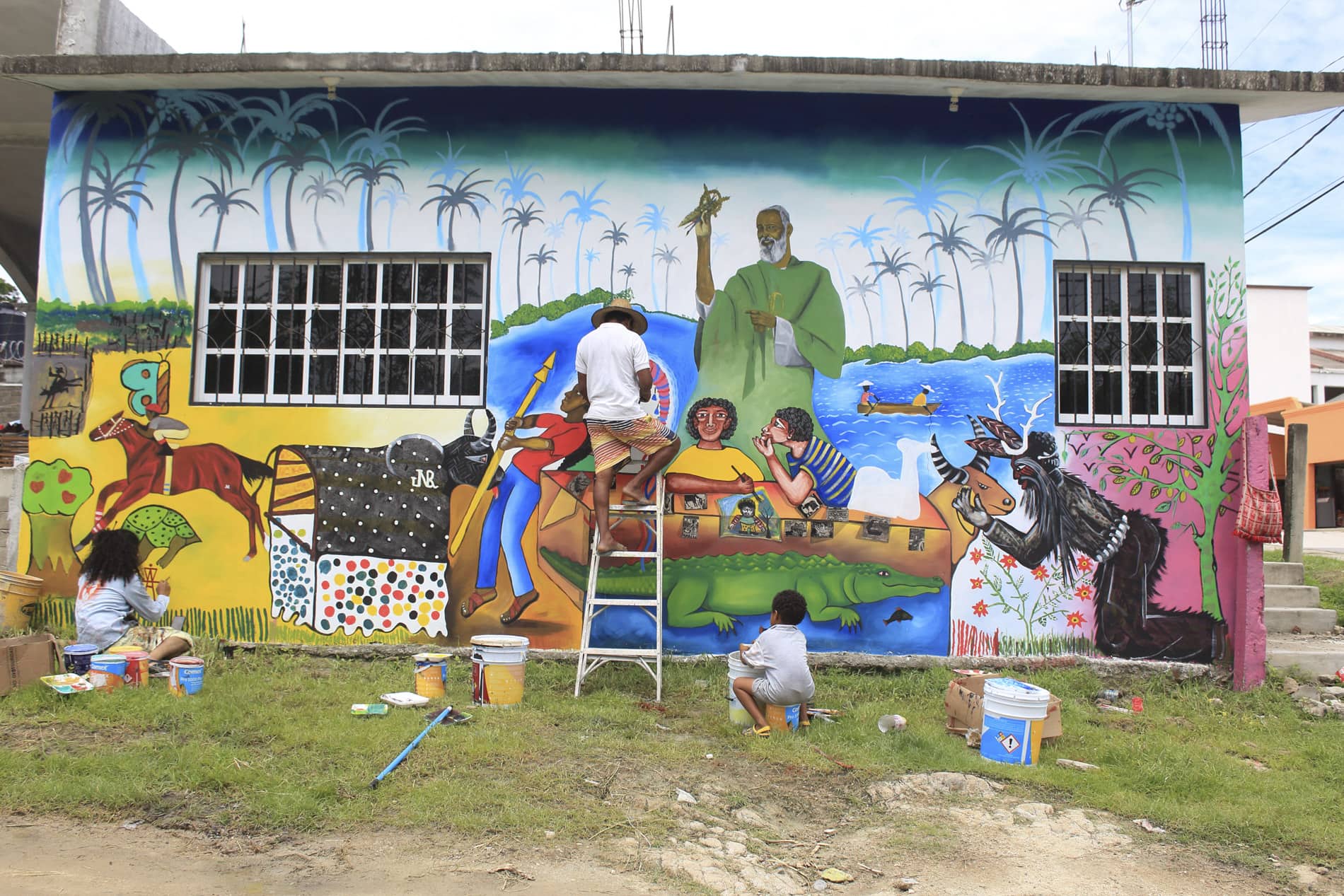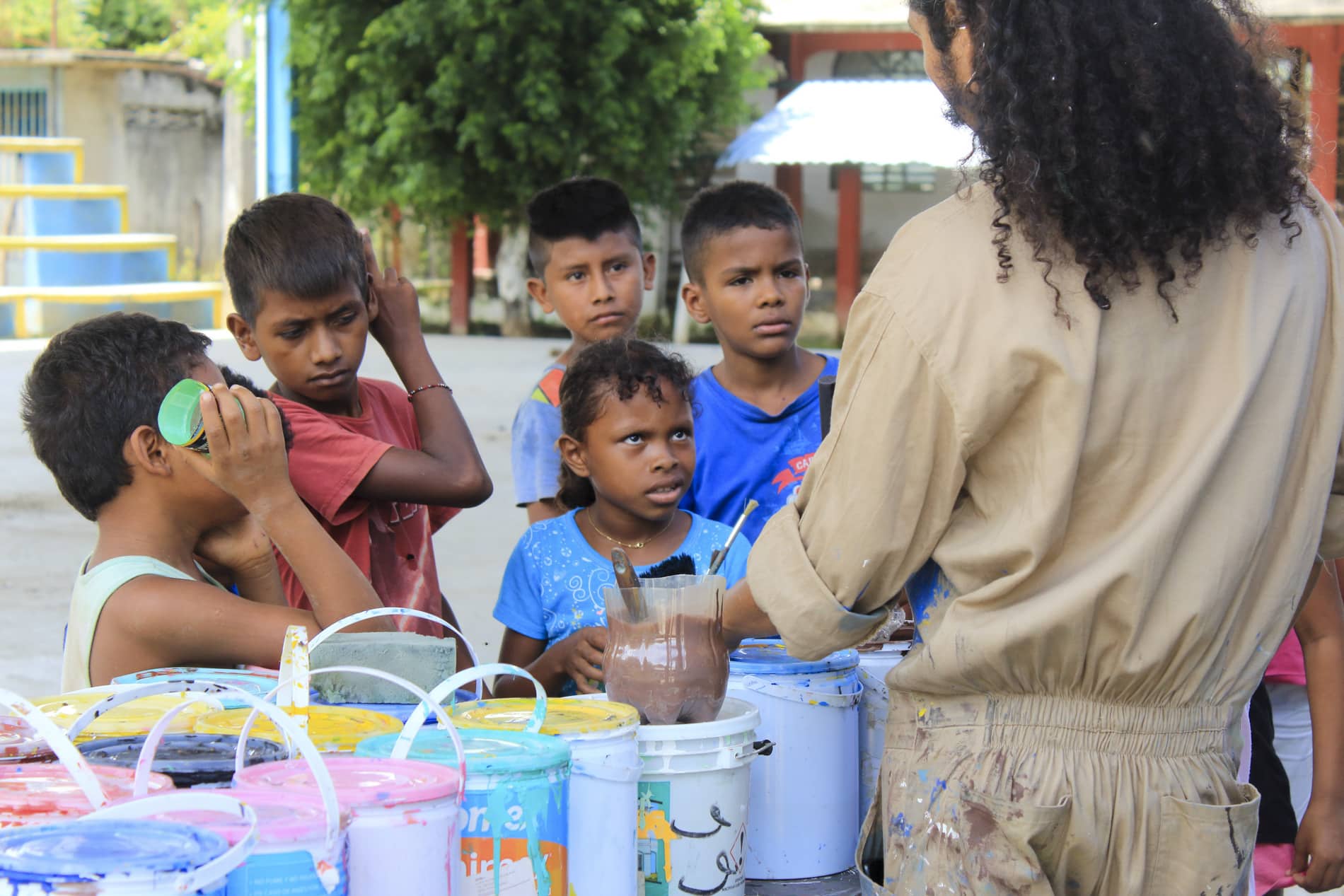
Africamericanos in Mexico: Murals of Memory
Olga Manzano and Baltazar Castellano met at a Paseo del Pendón, a traditional festival in Chilpancingo, in which the seven regions of the state of Guerrero participate with the traditional dances of each place. Olga had never thought that the dance of the devils has an Afro-descendant origin. Balta told her about the origin of the dance, showed her the engravings he had made about it, and told her about his history at the Cimarrón Cultural Center.
Olga says that no one never told her that there were black people in Mexico. She doesn’t recall studing it in high school, or when she studied physical anthropology in college. Despite that, they called her grandmother morena, “as we say to black people in Mexico,” because she was from the coast and had very frizzy hair. When she met Balta she understood that many of the things that happened with her grandmother and with herself, and that much of what her grandmother had taught her had to do with her Afro-descendant origin.
Today, invited by the Africamericanos project by Vist Projects, they are making a series of murals in five communities on the Costa Chica. The murals, in which three other muralists and the communities themselves participate, are part of the initiatives around the Africamericanos exhibition at the San Agustín Etla Arts Center in Oaxaca, financed by Bancomer’s BI project. The record of the experience is in charge of Vanessa Zayas, a young photographer from the area.
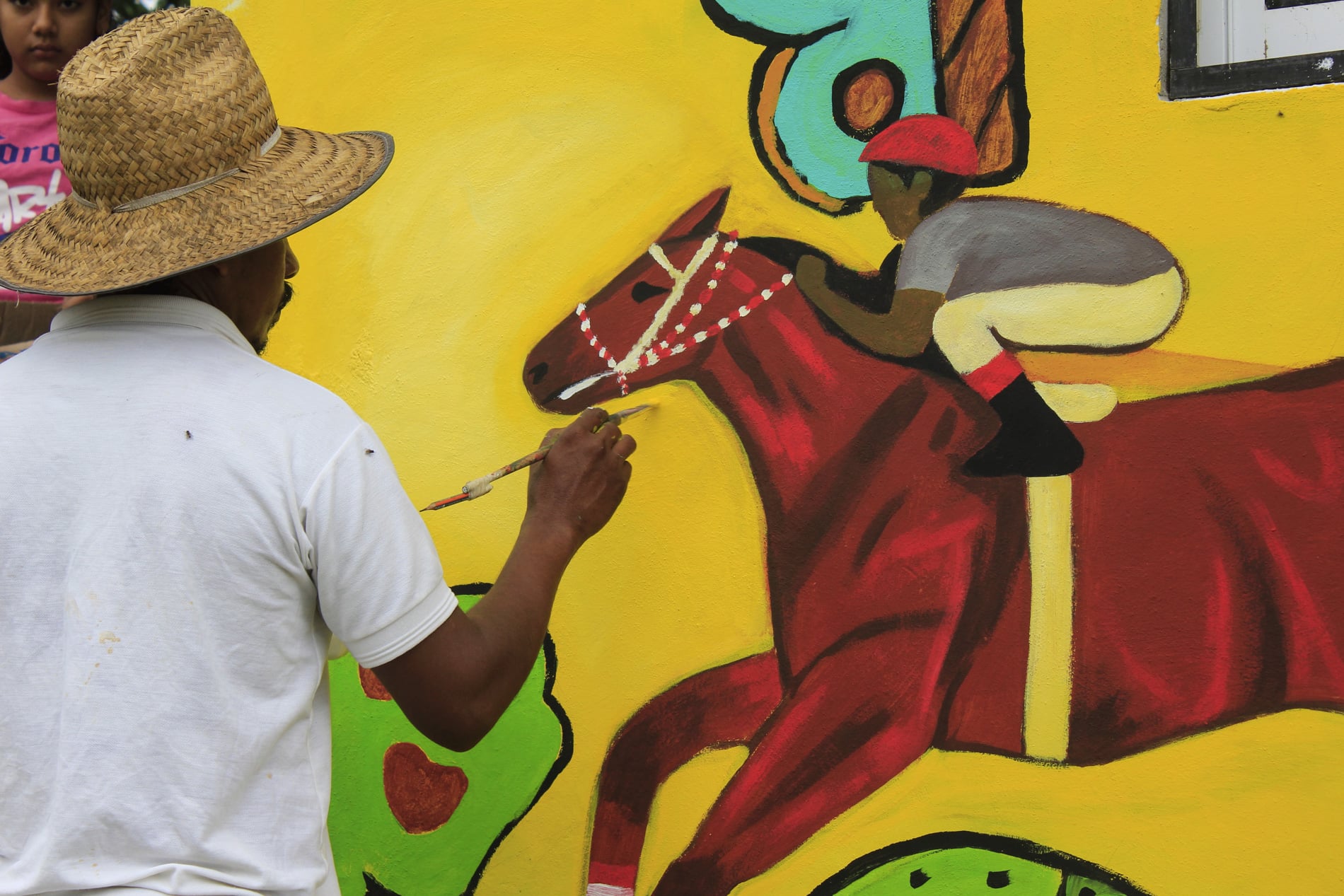
Not only in Mexico, the history and reality of Afro-descendant populations has been hidden and erased from the official accounts of the nation. It is a general trend in the Americas, the host territory for the vast majority of the African diaspora. It is estimated that approximately 15 million people were victims of the transatlantic slave trade over 400 years. According to official documents in Mexico, 2.04% of the national population recognizes itself as Afro-Mexican. Other researchers say that this percentage ranges between 3 and 9%.
A region of that country, the Costa Chica in Guerrero, is traditionally associated with the so-called “morenos”. Olga says that people on the coast do not use the word Afro-descendant to identify themselves, for her that is still an academic term. People prefer to call themselves: “black, costeño, guerrerense or oaxaqueño.” As in other countries, the territorial affiliation is very strong.
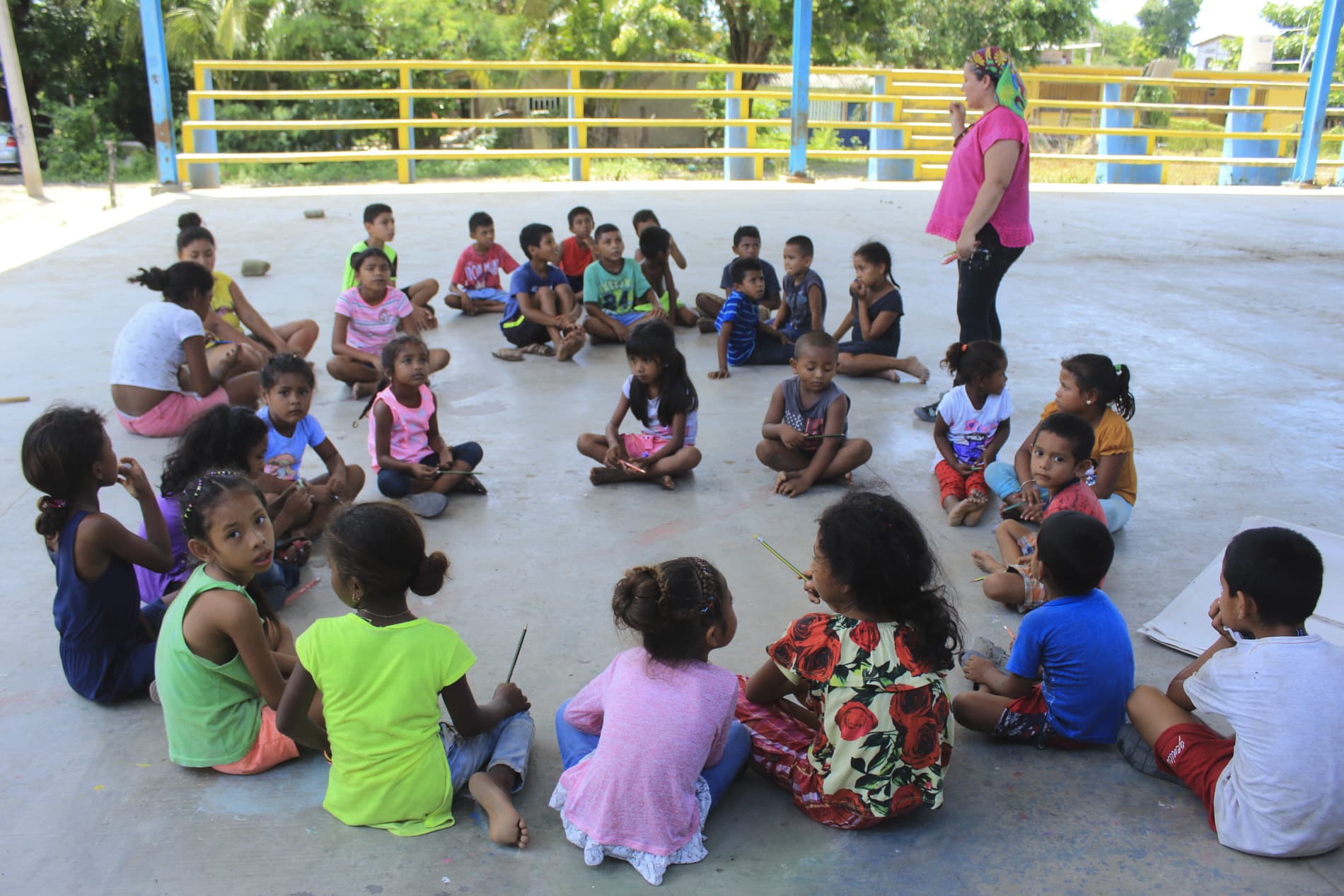
In that area of Mexico, approximately 40 years ago, Glyn Jemmott Nelson, better known as Father Glyn, arrived. He was an Afro-descendant Jesuit priest from Trinidad and Tobago. Father Glyn, together with leaders of the region, founded México Negro, a civil association and the Cimarrón Cultural Center, where muralists such as Baltazar were trained.
That was Balta’s first approach to the plastic arts. He says that young people between the ages of 10 and 15 met at the Center and made community murals. The two spaces founded between the community and Father Glyn always work together. In this way, people like Balta not only approached certain techniques and developed their artistic creativity, but also received political training. Father Glyn’s work in that region promoted the political organization of the Afro-Mexican people, beginning with their self-recognition in an area of great cultural diversity.
After Mario Guzman, Balta’s teachers, left the direction of the Center, Baltazar assumed that place for almost 15 years. For him, Cimarrón was his cradle and his school. Now he says that he left the community processes and returns to them with the muralism workshops.
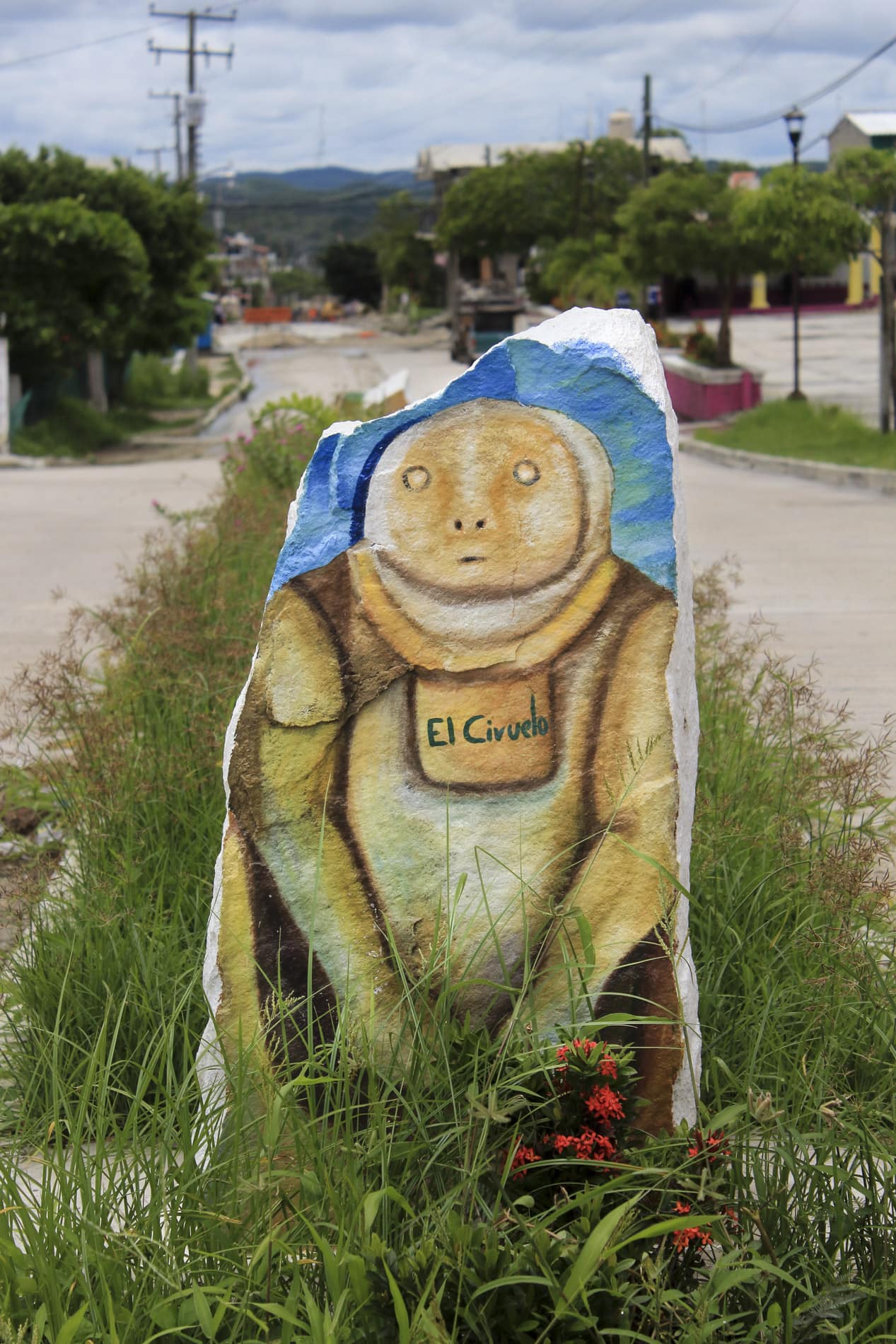
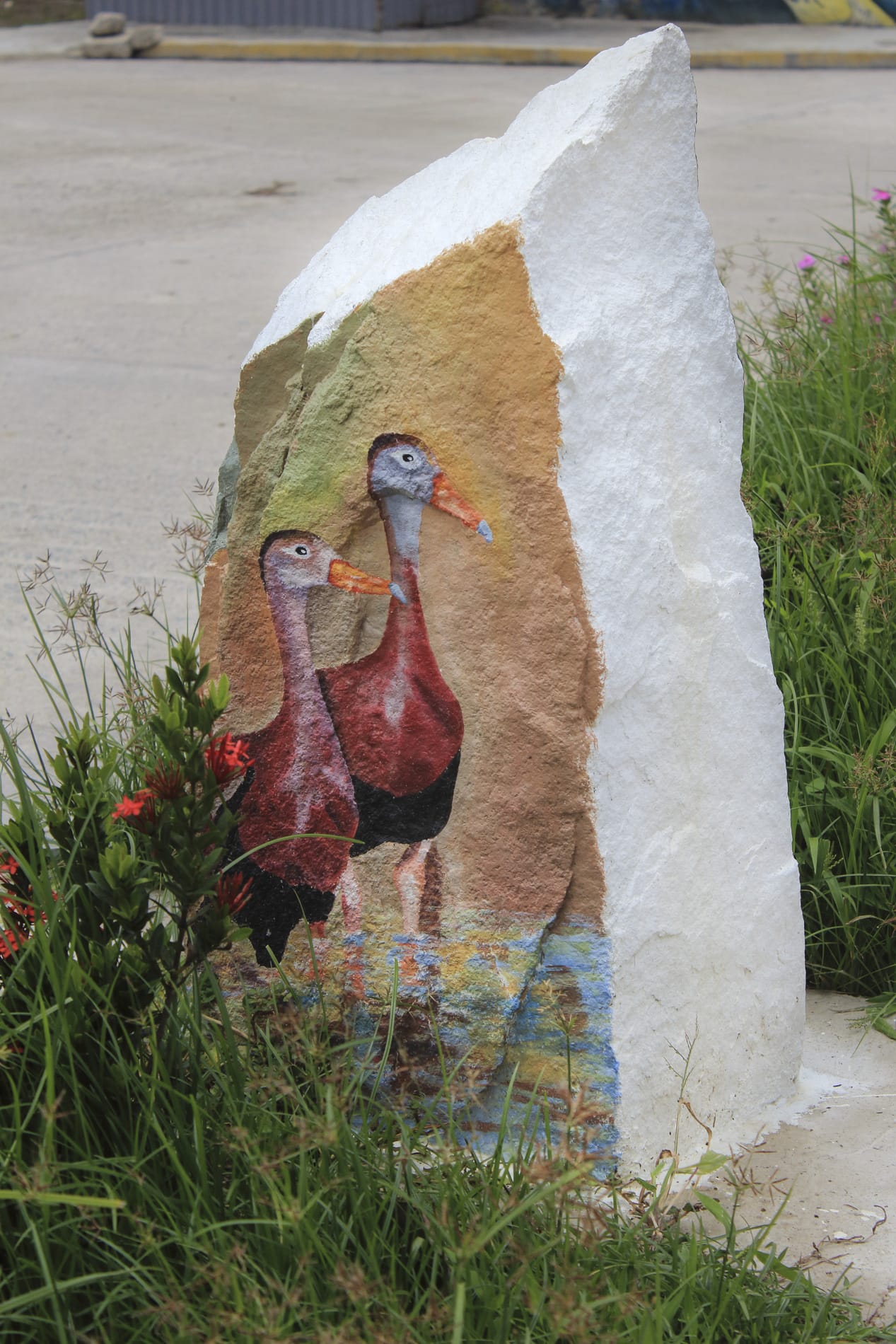
The meeting between Olga and Balta led them to create Raíz de la Ceiba Foundation, Balta is a muralist, engraving maker and he is also trained as a plastic artist in Oaxaca. Olga is an anthropologist with has nearly 20 years of community service experience in Guerrero. Between them they offer muralism workshops to children on the Costa Chica. Through painting they take the opportunity to rescue memory and claim cultural rights. Little by little they have been involving other artists in the area. Their intention is that when people see the murals they identify and recognize the stories and characters represented.
For Africamericanos, they began in El Ciruelo, Oaxaca, with a mural dedicated to Father Glyn. In that town the father began his work, and founded Cimarrón. Among the things that were claimed in that Cultural Center was the Artesa dance, which also appears in the mural. On the dancers of the mural they painted the engravings of the children trained in the center. Among the people who participated in this mural was Elder Ávila Palacios, one of the first people who was trained in engraving at the Cimarrón Center and educated by Father Glyn. Elder Ávila was one of Baltazar’s teachers.
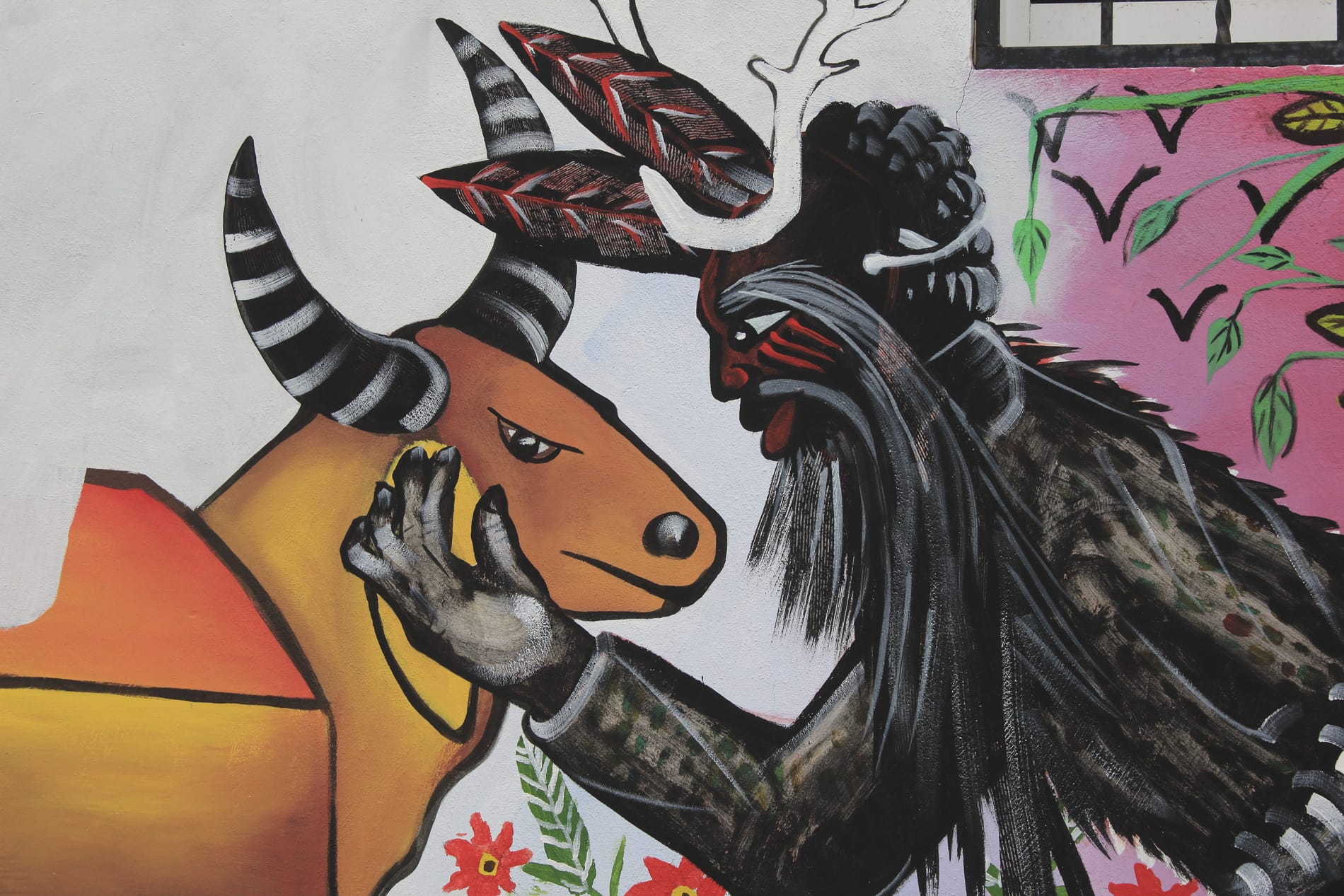
For the project it is very important that children participate in the murals elaboration. Not only because it is a space that allows them to recognize and value their history, but also because if they are part of the work, then they protect it. In addition, in each place the children are the guides for the workshops.
The second mural was made in Llano Grande La Banda. There they had to think of another methodology because many children came to paint: the reception was so great that there was no need to publicize the event. In Llano Grande the mural is dedicated to the dance of the devils, of which the inhabitants of the town feel a lot of pride because the dancers participate in the Guelaguetza in Oaxaca, also known as Monday of the hill. It is a very popular festival in which all the towns of Oaxaca are invited to participate.
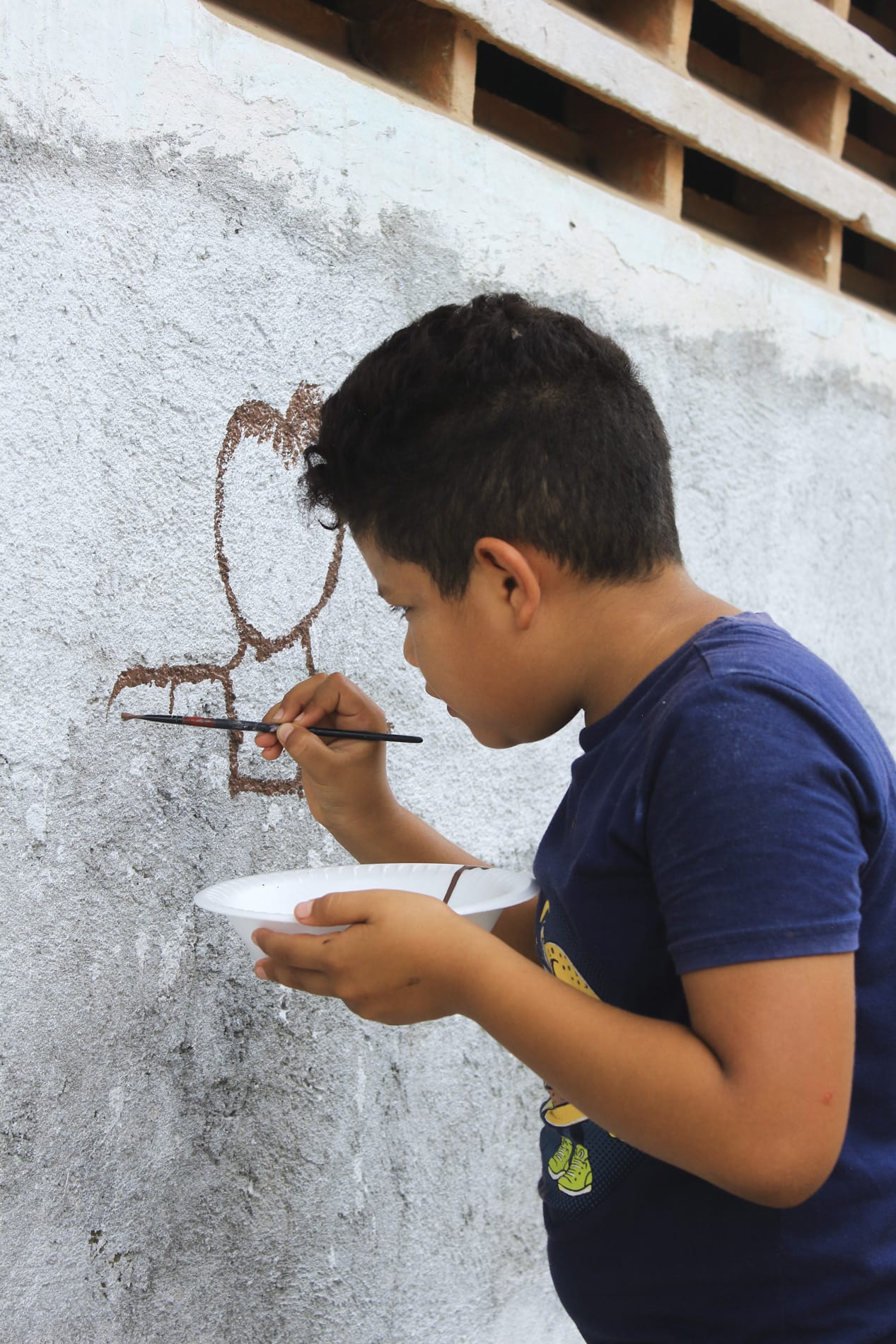
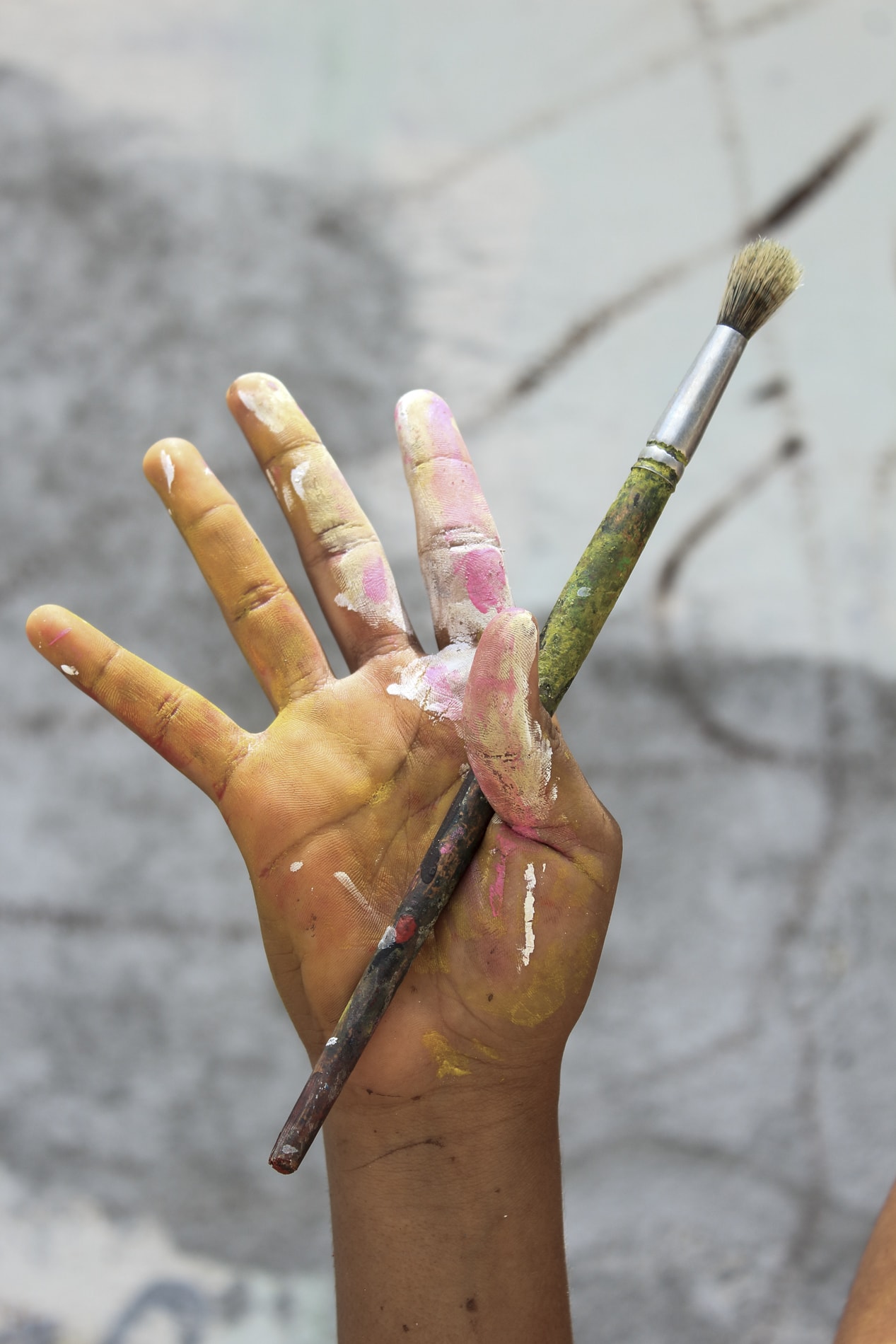
Two of the traditional musicians from Llano Grande participated for the last time in this year’s festival. The mural was made in memory of those two musicians . The musicians in that town are very important, in fact, says Olga, the name of the town includes the words “La Banda”, at the end, because the musicians of the only band in the region lived there, they accompanied parties, funerals, celebrations , etc.
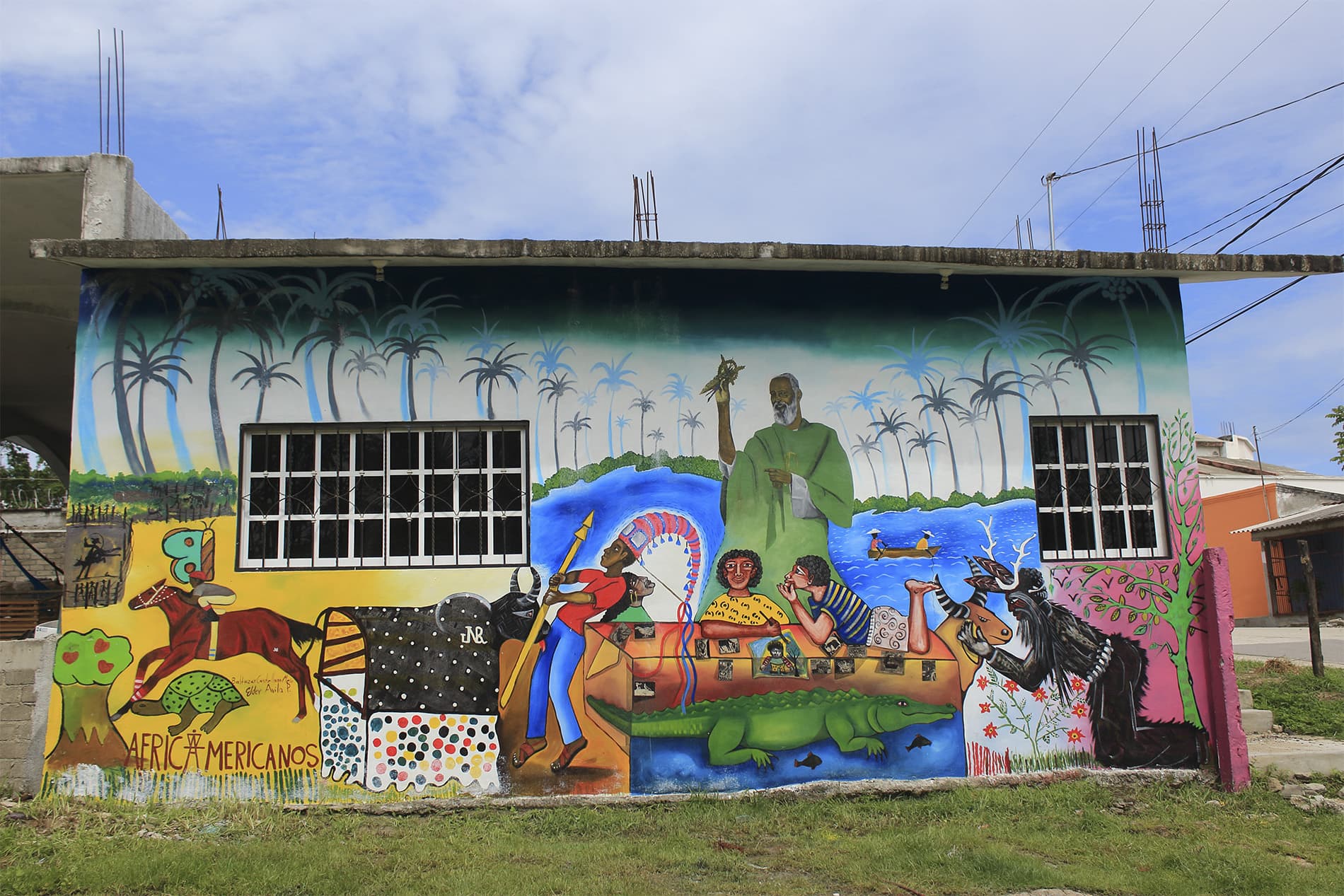
On the other side of the wall, they dedicated a space just for children. They were asked what they liked the most and they all answered that the Day of the Dead, because that day, Olga says, “the devils, the macho, the mule, the minga, the petate bull, the turtle come out”. Then in that mural the infantile characters appear, with the traditional masks.
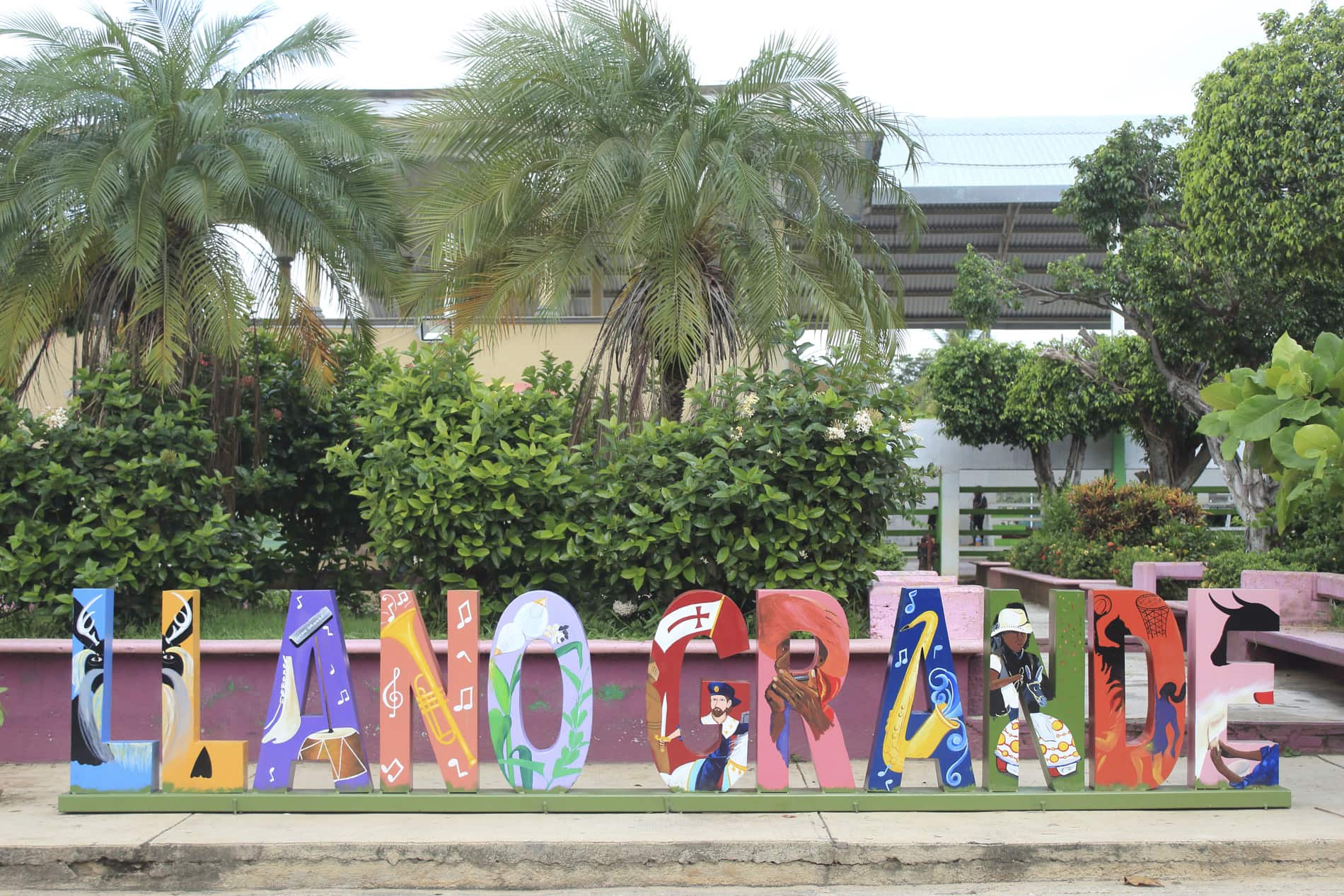
Now they are finishing a mural in Cerro del Indio, a small town in Cuajinicuilapa. In this case, the mural was made in honor of the black people who inhabit the town and who stayed and inhabited the place because that was where they worked. To achieve this, they spoke with the elders of the town who told them various stories. Among them, in one they say that before at the top of the hill lived a very large Indian with very long hair, with him the Afro people who came to live in the town made exchanges.
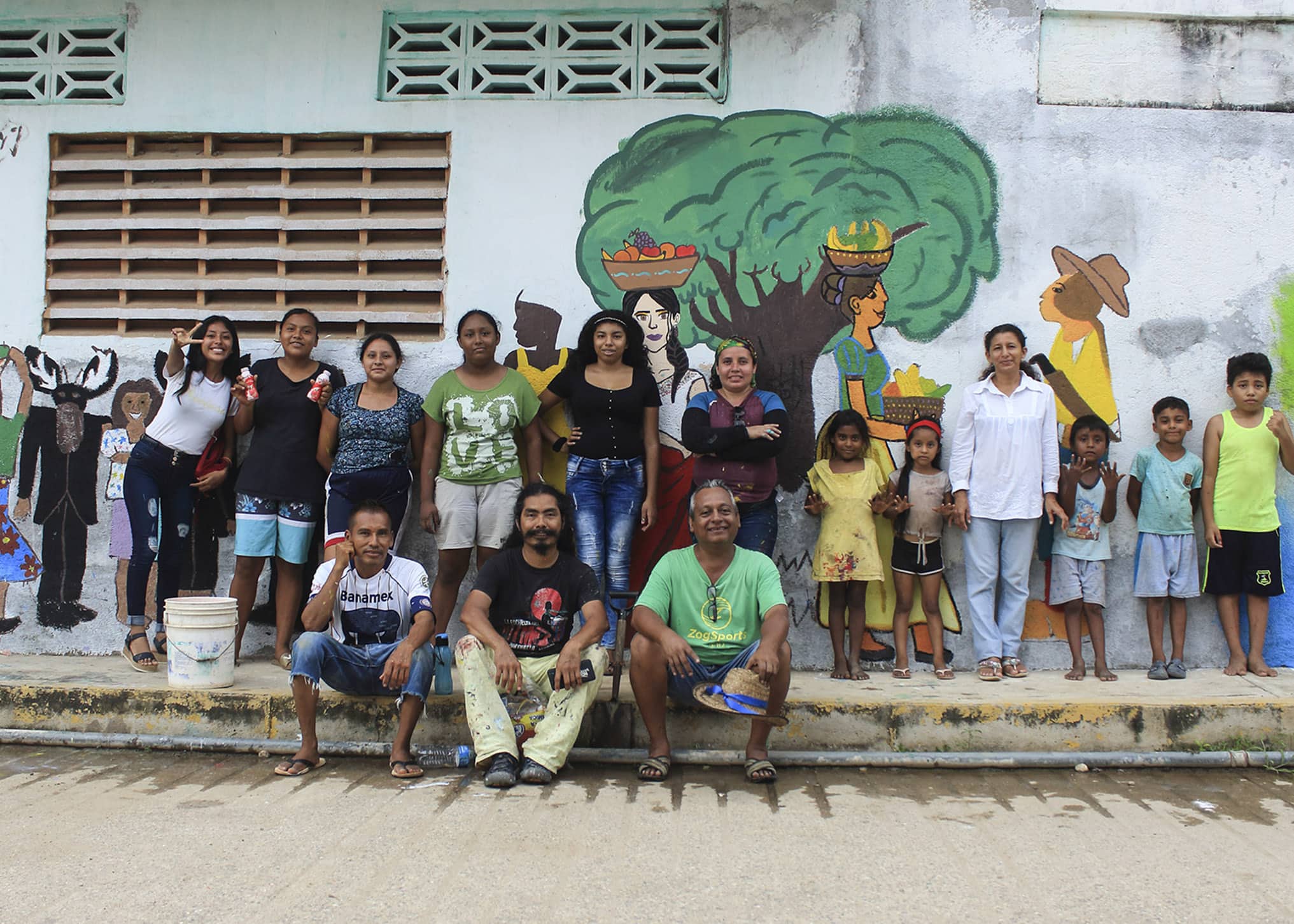
So in this mural the hill is represented, with the Indian living on its top dressed in clothes that carry the traditional Mixtec embroidery of the area. At the bottom are the men and women who went to the place to work with their different tools and who were finally the ones who inhabited the place. In addition, the mural represents day and night because the locals say that the Afro-descendant population of the place had a strong relationship with Asian sailors who reached the coast. Some people have physical features that show that relationship.
The next mural will be done on the hill of Las Tablas, they still do not know what they are going to paint, because that is always defined with the participation of the inhabitants of the place.
